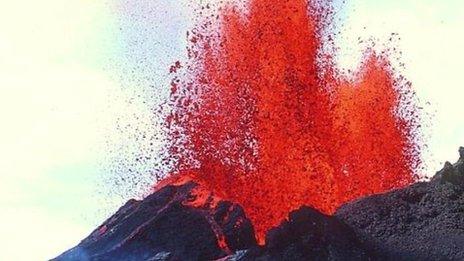Kilauea: Earthquakes follow eruptions from Hawaii volcano
- Published
Lava flows are continuing from the Kilauea volcano in Hawaii
A number of strong earthquakes have hit Hawaii's Big Island, a day after the eruption of the Kilauea volcano.
One 6.9 magnitude quake, south-east of the volcano, was the most powerful to hit the US state since 1975.
It briefly cut power and sent people fleeing from buildings but there was no tsunami warning.
Meanwhile, several fresh eruptions spewed fountains of lava 30m (100ft), destroying several homes and leaving fissures on three streets.
The Civil Defense Agency told any remaining residents to evacuate.
It said there were deadly levels of dangerous sulphur dioxide gas in the air and emergency crews would not be able to help anyone affected.
The new volcanic activity in Mt Kilauea's lower east rift zone amounted to "vigorous lava spattering", the US Geological Survey (USGS) said, adding that additional outbreaks in the area were likely.
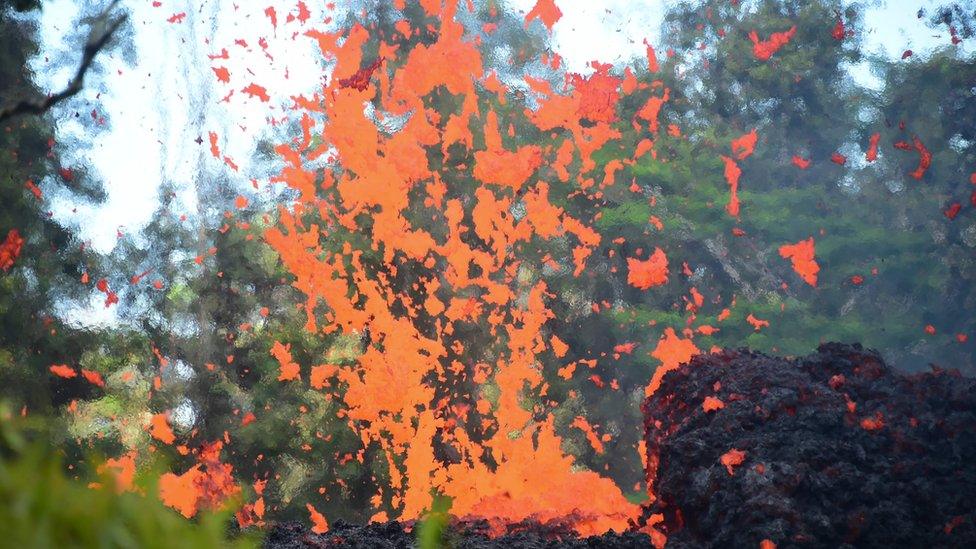
The USGS said "vigorous lava spattering" was happening
The lava was not travelling more than a "few tens of yards" from the vents, which were on streets in the Leilani Estates neighbourhood near Big Island's eastern tip, the USGS said.
However, ground deformation was continuing and there was high earthquake activity in the area, it said. Meanwhile, the level of the lava lake inside the volcano was continuing to drop.
Two homes were destroyed in the latest activity, ABC quoted Hawaii island Mayor Harry Kim as saying.
Maija Stenback, an eyewitness, told the BBC the eruption "was like when someone plays the bass really heavy: you could really feel the power and the lava".
"The colour was unbelievable, and the sound was unbelievable," she said.
"You could hear and feel the eruption a good half a mile away, and the closer you got, the more you could feel it."
Residents described fleeing their homes on Thursday evening.
"My family is safe, the rest of the stuff can be replaced. When I bought here 14 years [ago], I knew that this day would eventually come. But the reality is sinking in now, external," one resident told Hawaii News Now.
A spokesperson for Hawaii's Mayor, Janet Snyder, said "elevated levels" of sulphur dioxide were stopping people returning to evacuated areas.
"It is quite toxic and in fact, even our first responders find it too hazardous at this time to go back into the sub-divisions without heavy, protective equipment," she said.
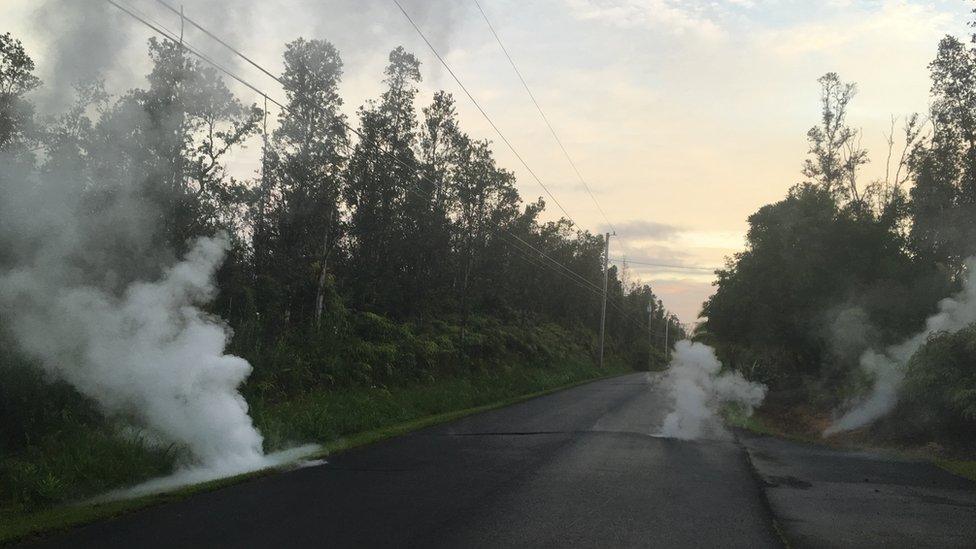
Steaming cracks appeared moments before a fissure opened early on Friday morning
Thursday's eruption prompted a local state of emergency and the mandatory evacuation of 1,700 residents.
Community centres have been opened to provide shelter for evacuees.
Kilauea is one of the world's most active volcanoes and the eruption follows a series of recent earthquakes.
Officials had been warning residents all week they should be prepared to evacuate as an eruption would give little warning.
A volcanic crater vent - known as Puu Oo - collapsed earlier this week, sending lava down the mountain's slopes towards populated areas.
Dr Dougal Jerram, an earth scientist at the University of Oslo, told the BBC that the quake had "occurred in the middle of a housing estate effectively, erupting through the roads, with magma shooting 30 metres up into the sky".
Hawaii's Governor, David Ige, said he had activated military reservists from the National Guard to help evacuate thousands of people.
Allow X content?
This article contains content provided by X. We ask for your permission before anything is loaded, as they may be using cookies and other technologies. You may want to read X’s cookie policy, external and privacy policy, external before accepting. To view this content choose ‘accept and continue’.
Earlier this year, a false alert warning of an incoming ballistic missile caused panic, leading the US state to reassess its alert system.
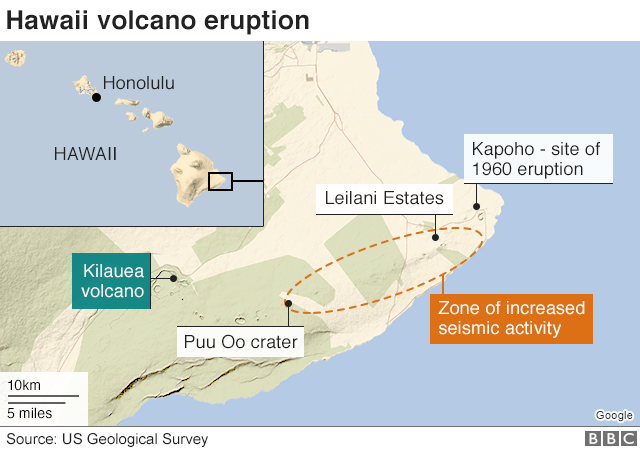
- Published4 May 2018

- Published4 May 2018
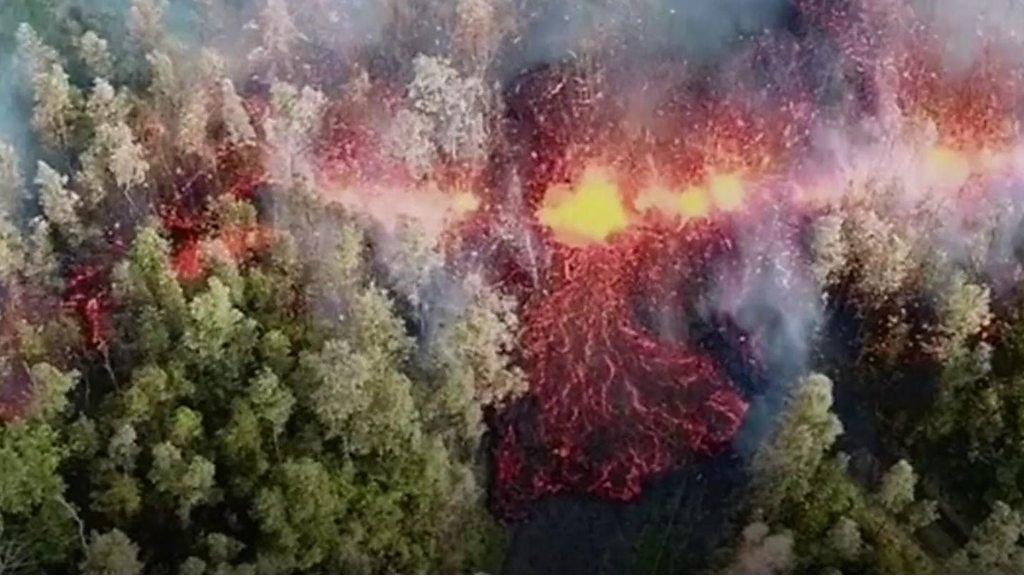
- Published25 April 2018
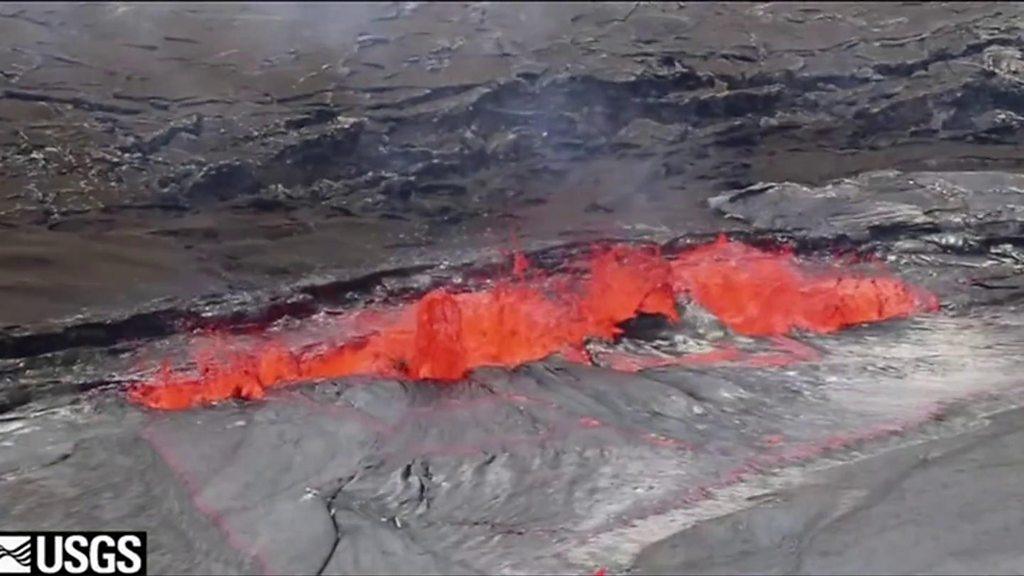
- Published12 September 2017
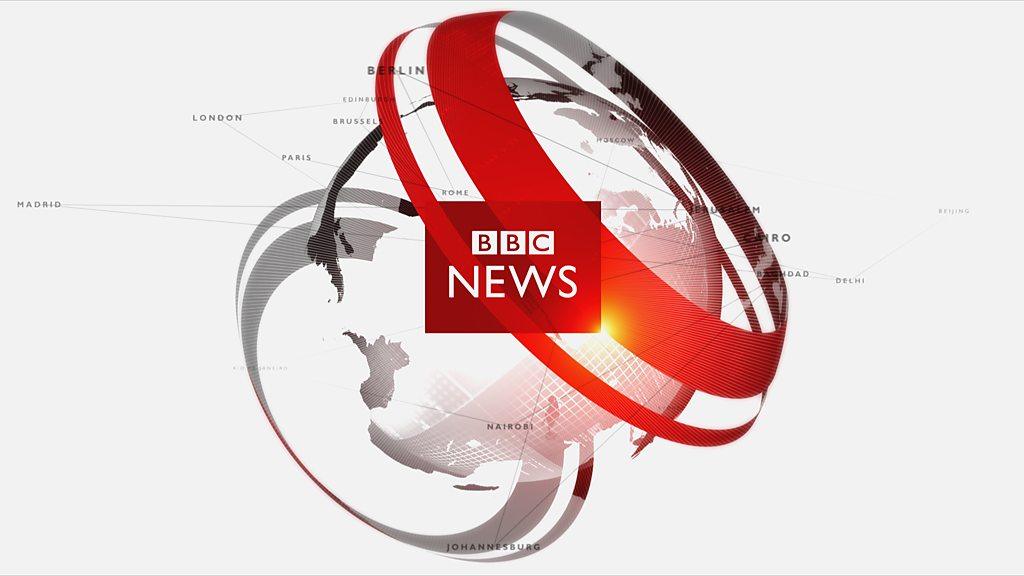
- Published12 September 2017
